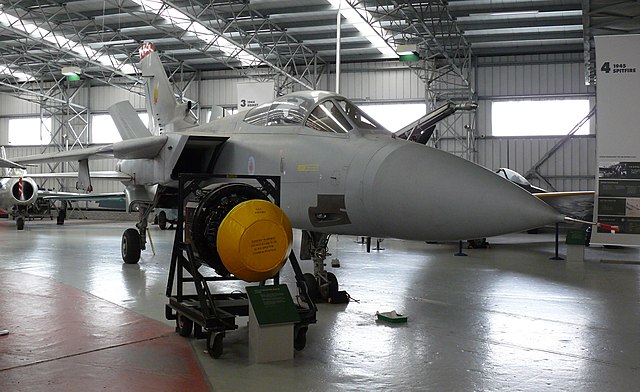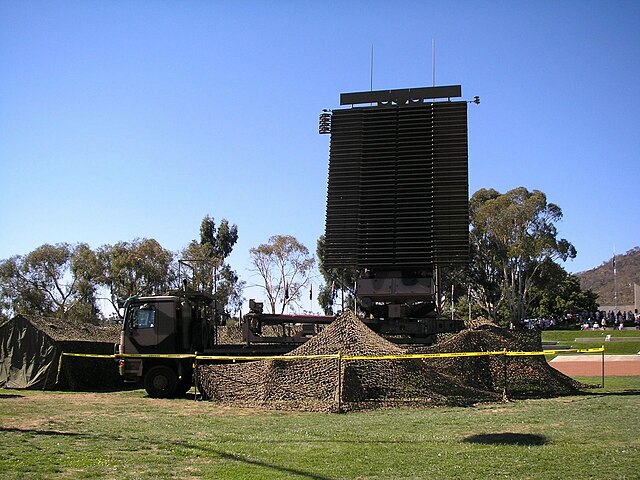Improved United Kingdom Air Defence Ground Environment
The Improved United Kingdom Air Defence Ground Environment, normally shortened to either UKADGE or IUKADGE, was the Royal Air Force's (RAF) ground-controlled interception system covering the British Isles during the 1990s. It consisted of a number of ground-based radar sites, links to airborne early warning aircraft and Royal Navy ships, a telecommunications system to send digital data and voice communications on a protected network, and processing systems based on VAX-11/780 computers. The network ultimately contained a dozen long-range radars including four Marconi Martello, two General Electric TPS-592, and six Plessey AR-320.
IUKADGE directed Panavia Tornado ADVs (pictured) against targets across the North Sea.
The failure of the Nimrod AEW3 project was one of the many significant setbacks for the UKADGE programme.
The Foxhunter radar proved to be another major problem during development, but unlike Nimrod, corrective action eventually produced a usable product.
The Warsaw Pact proved unable to prevent even their own citizens from defeating their security apparatus; the threat to the UK from their aircraft no longer seemed important.
The AN/FPS-117 is an L-band active electronically scanned array (AESA) 3-dimensional air search radar first produced by GE Aerospace in 1980 and now part of Lockheed Martin. The system offers instrumented detection at ranges on the order of 200 to 250 nautical miles and has a wide variety of interference and clutter rejection systems.
An Australian AN/TPS-77 in 2007
AN/TPS-59. The individual transmitter/receiver modules are visible in this image.






